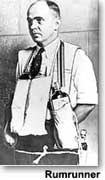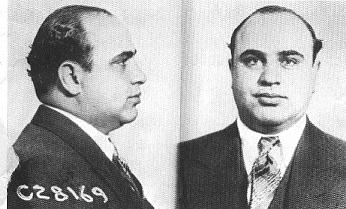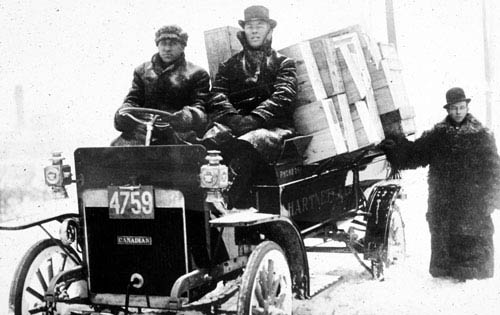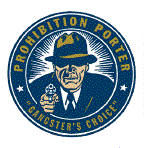During the "Roaring Twenties" a prosperous time in history, after World War II, the Amrerican government decided to pass the 18th Amendment prohibiting any consumption of beverages with a alcohol percentage of over 0.5%. This law was passed in an attempt to decrease crime, poverty, death rates, and improve the economy and the quality of life. However this law, as shown by history, was proved to be futile in its attempt in decreasing or even eliminating these social problems.

Firstly, it was impossible for the American government to enforce this law. In fact, there were only 1,550 federal agents and over 18,700 miles of vast and virtually unpoliceable coastline. These facts made the government incapable of enforcing this prohibition of alcohol. the government was so incompetent that only 5 percent of smuggled liquor was stopped.
In consequence of this poor law enforcement, the beginning of an illegal industry thrived, the crime rate doubled from what it had been before the introduction of prohibition. The rate of homicides rose 88%, from 5.6 per 100,000 people to 10 per 100,000 people. As a result, prohibition increased the crime rate, created black-market violence, diverted resources from enforcement of other laws, and increased prices people had to pay for prohibited goods.
 The majority of these results can be blamed mainly on the rise of organized crime. Since alcoholic beverages were no longer available to the public, these normally law abiding citizens to turn to the organized gangs controlling the bootlegging industry. This high demand and low supply of illegal liquor led to the rise of many gangs. These large profit motives lead to over four hundred gang related murders a year in Chicago alone. These conditions allowed these organized gangs to thrive. Even though many of the powerful gangs were located in New York, Chicago was the headquarters of the most famous gangsters including Johnny Torrio, "Bugs Moran", the Gennas, and the O’Banions. However, the most infamous and well-known gangster was Al Capone.
The majority of these results can be blamed mainly on the rise of organized crime. Since alcoholic beverages were no longer available to the public, these normally law abiding citizens to turn to the organized gangs controlling the bootlegging industry. This high demand and low supply of illegal liquor led to the rise of many gangs. These large profit motives lead to over four hundred gang related murders a year in Chicago alone. These conditions allowed these organized gangs to thrive. Even though many of the powerful gangs were located in New York, Chicago was the headquarters of the most famous gangsters including Johnny Torrio, "Bugs Moran", the Gennas, and the O’Banions. However, the most infamous and well-known gangster was Al Capone.  With the rise of crimes and gangs, one can see that prohibition eventually encouraged criminal activity instead of exterminating it.
With the rise of crimes and gangs, one can see that prohibition eventually encouraged criminal activity instead of exterminating it.
Al Capone
As contrary as to one might think, alcoholic beverages were not very hard to obtain during Prohibition. In fact, it was fairly easy to obtain because of the gigantic bootlegging industry that had grown out of prohibition. On almost any street there would be a bar selling liquor hidden in basements, office buildings, and anywhere that could be found. In fact, these bootleggers were so numerous that there were twice as many of these illegal stores as there were saloons closed by Prohibition.  These illegal stores would have liqour either locally imported from Canada or overseas, or have beverages with low alcohol home-made. These home-made beverages had less than 0.5% alcohol, yet when it was added with yeast, it would quickly turn into beer. Prohibition became so ineffective that arrests for drunkenness and disorderly conduct increased 41 percent, while arrests for drunk driving increased 81 percent, which defeated the whole purpose of Prohibition.
These illegal stores would have liqour either locally imported from Canada or overseas, or have beverages with low alcohol home-made. These home-made beverages had less than 0.5% alcohol, yet when it was added with yeast, it would quickly turn into beer. Prohibition became so ineffective that arrests for drunkenness and disorderly conduct increased 41 percent, while arrests for drunk driving increased 81 percent, which defeated the whole purpose of Prohibition.
Overall, the 18th Amendment turn out to be a complete and utter failure. Instead of achieving the goals it had set out to do, prohibition ended up making the issues which it had been made to resolve even worse.